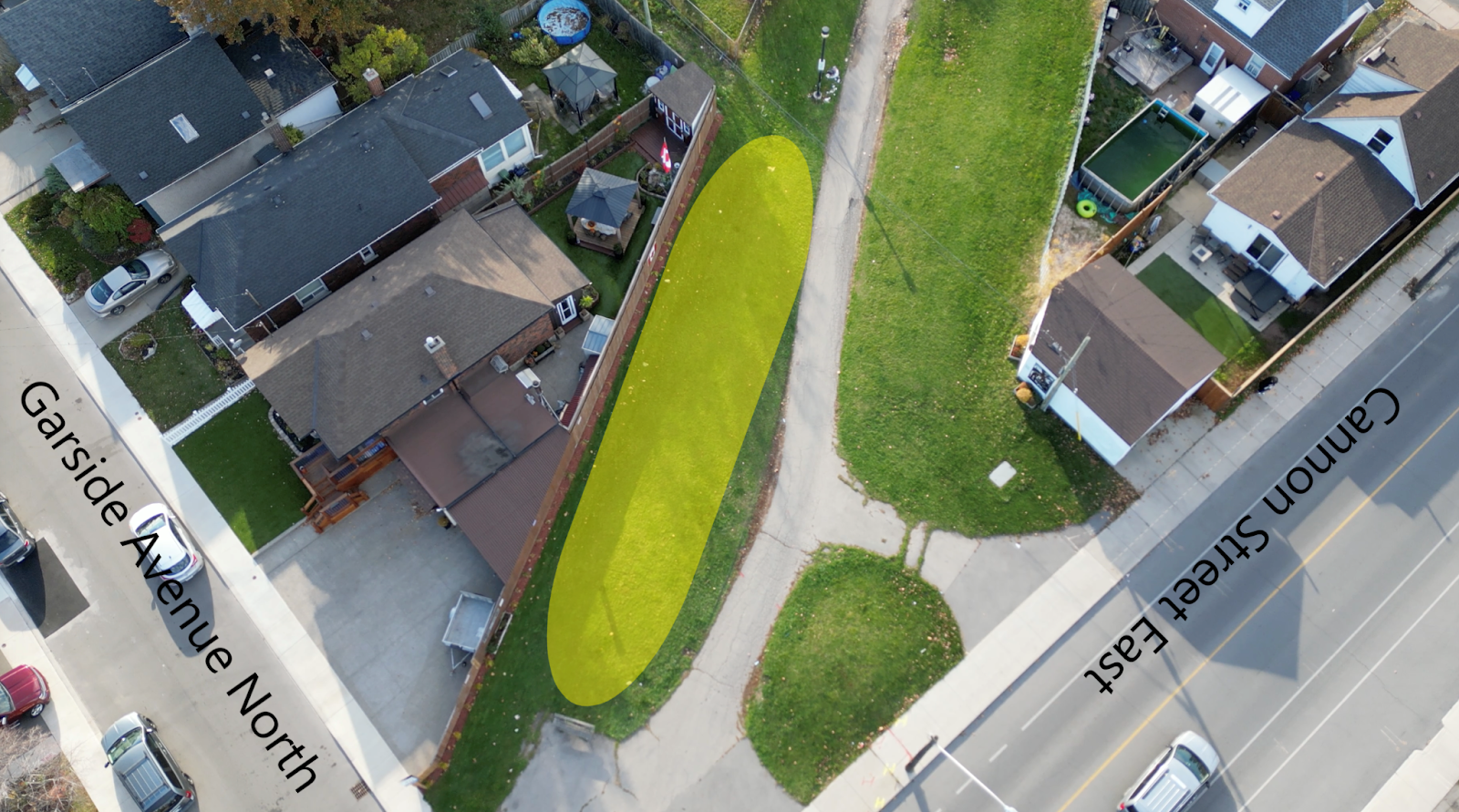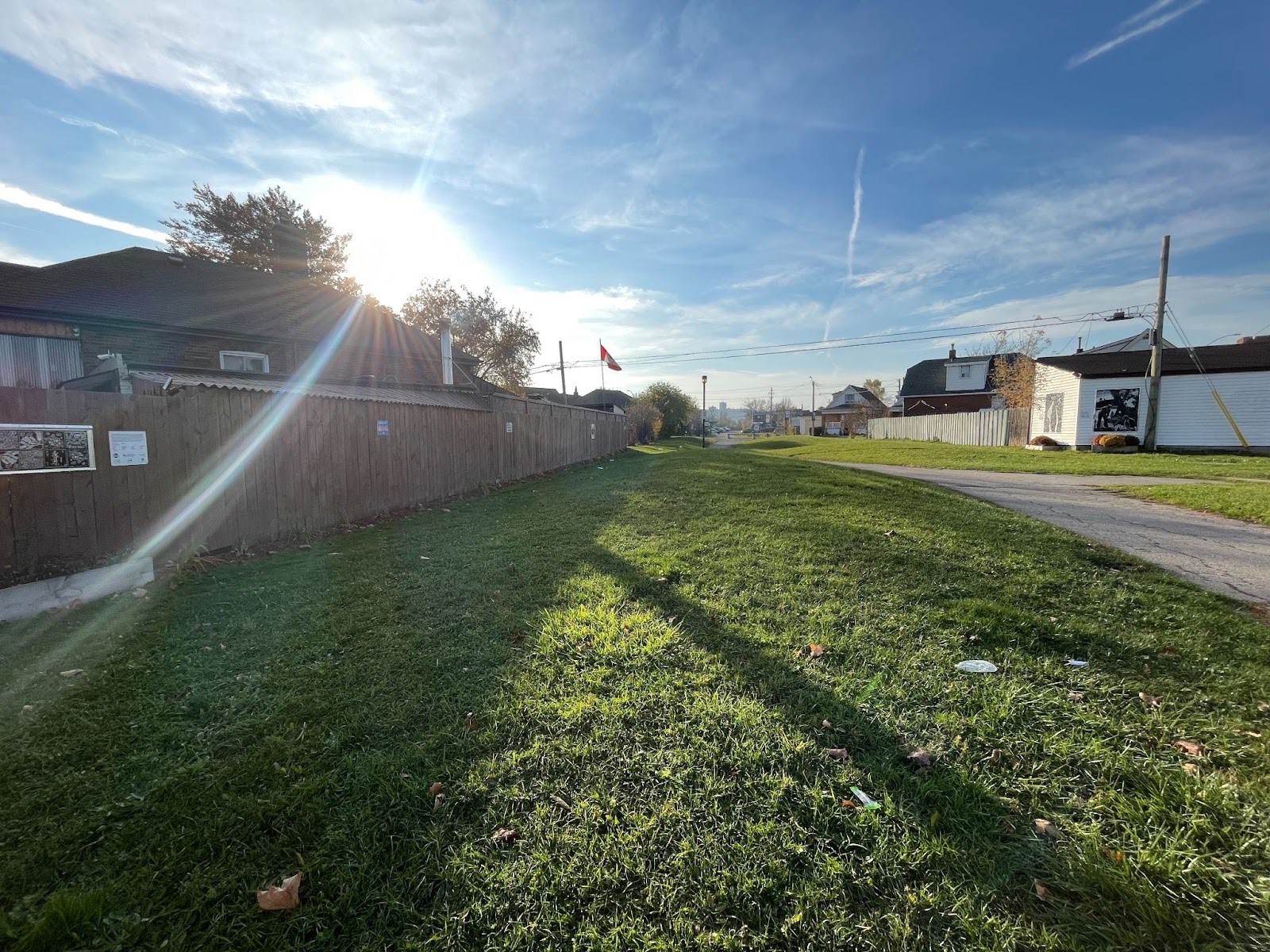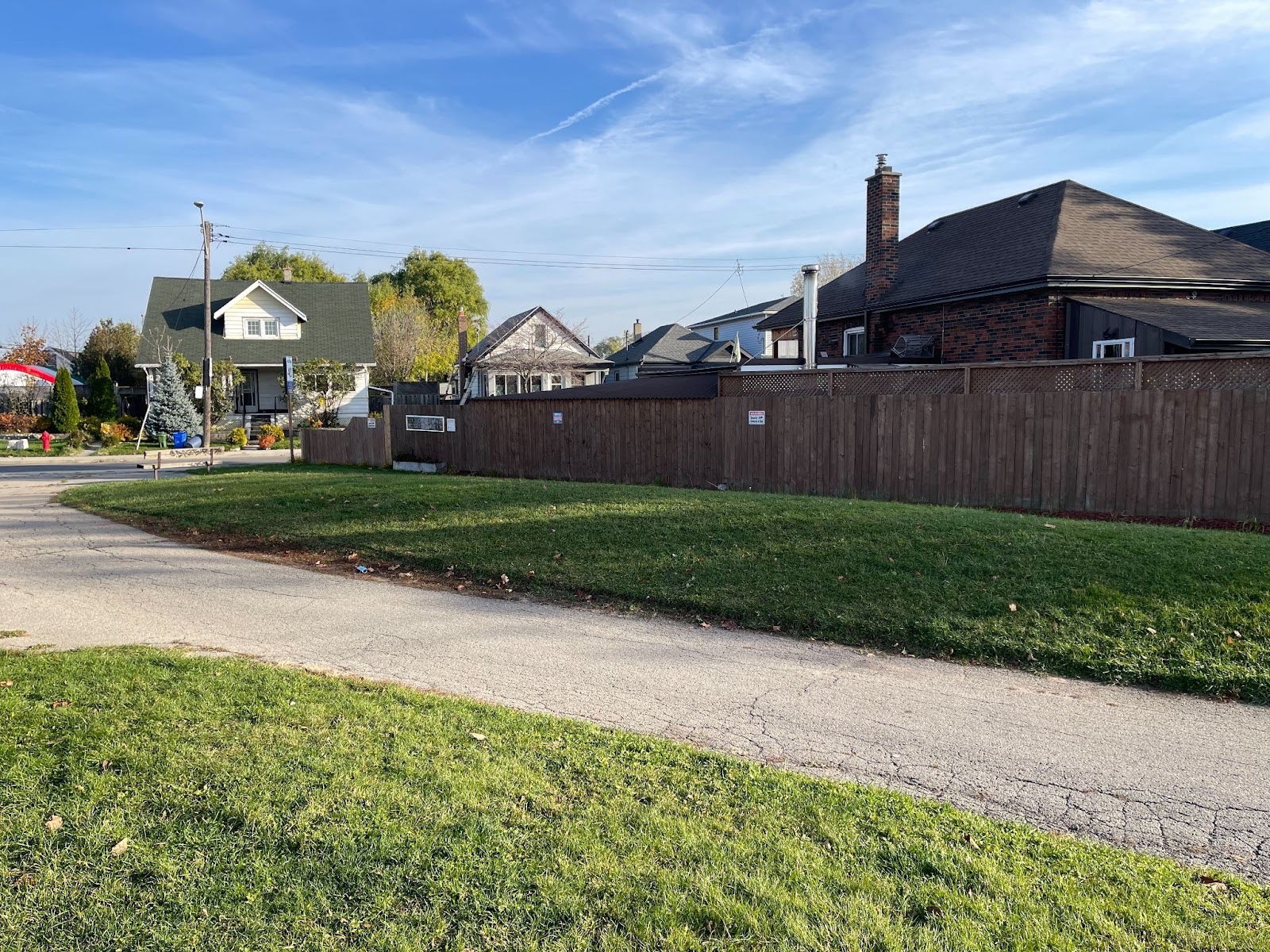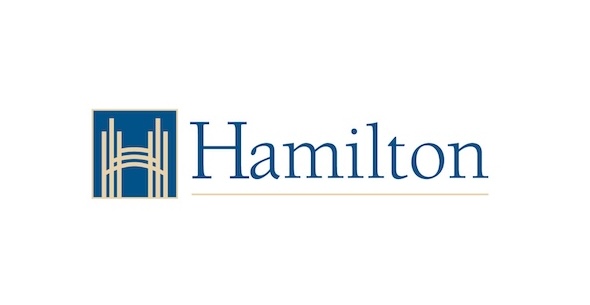Deadline: January 22, 2024 at 11:59 PM EST
Award: $170,000 CAD
Virtual Artist Information Session: January 8, 2024 at 7:00 PM EST (This is not a mandatory meeting)
Artists are invited to attend a virtual meeting to view a presentation on the adjudication process and submission requirements and ask questions. Frequently asked questions from the session are available.
Opportunity Overview
Community Background
The City of Hamilton is situated upon the traditional territories of the Erie, Neutral, Huron-Wendat, Haudenosaunee and Mississaugas. This land is covered by the Dish With One Spoon Wampum Belt Covenant, which was an agreement between the Haudenosaunee and Anishinaabek to share and care for the resources around the Great Lakes. This land is further covered by the Between the Lakes Purchase, 1792, between the Crown and the Mississaugas of the Credit First Nation.
In 2001, the City of Hamilton was formed from the amalgamation of Hamilton and its five neighbouring municipalities: Ancaster, Dundas, Flamborough, Glanbrook, and Stoney Creek. The current population of Hamilton is approximately 570,000 people. Due to its location, the city has been an important Great Lake port and rail centre, and has a long military history. Traditionally, the Hamilton economy was made up of iron, steel and other types of manufacturing, leading to the nickname “the Steel City”. More recently there has been a shift away from manufacturing, towards more service sector jobs. Additionally, Hamilton and the surrounding area is a major fruit growing district.
Hamilton has a vibrant art scene, with museums and art galleries and a public art collection owned by the City. The city is home to the Art Gallery of Hamilton, the third largest public art gallery in Ontario, and McMaster Museum of Art, at McMaster University. Additionally, the city is home to the annual Supercrawl arts and music festival which takes place every September as well as many other arts and cultural festivals and events.
Site Context
The water pipe corridor was installed diagonally through the east end to pump water from what is now the Museum site. It changed direction in the vicinity of what is now known as the intersection of Main and Ottawa Streets. The pipes then turned southward to a reservoir at the escarpment near the Kenilworth Avenue Access, where water was fed by gravity to the city below.
The city’s east end once consisted of rural land situated partially in the townships of Barton and Saltfleet. In the first decades of the 20th century the steel industry became prominent and land was needed to accommodate the industrial expansion and accompanying growth of population. The City of Hamilton acquired the lands now known as the East End, during the first half of the 20th century. Former agricultural lands were replaced with today’s urban fabric of street grid, housing, and large tracts of industrial properties. The Pipeline Trail traverses this grid diagonally.
Today, the Pipeline Trail is located in Ward 4 of the City of Hamilton in a corridor that is approximately 20 metres wide. Originating at the Museum of Steam and Technology site, the corridor runs diagonally through the neighbourhoods of Parkview West, Normanhurst, Homeside, and Crown Point East. The western Trail Head is located at the intersection of Main and Ottawa Streets. The eastern Trail Head is located at the intersection of Barton Street and Strathearne Ave.* The Pipeline Trail provides neighbourhood connections to schools, parks, playgrounds, and commercial areas. As the trail becomes fully developed, it has the potential for providing greater connectivity with linkages to the Red Hill Valley Trail, Escarpment Rail Trail, the Waterfront Trail, and parks such as Gage Park and Confederation Park.
*Note: the section between the Museum of Steam and Technology site and Barton is currently undeveloped and difficult to access.
Artwork Location
Note: There are underground power lines at this site that will need to be accounted for in foundation placement. Detailed information on the power line locations will be provided to shortlisted artists at Stage 2. Additional site information will also be provided to the shortlisted artists in Stage 2.
Figure 1: Artwork installation area

Figure 2: Artwork installation area (westward facing view)

Figure 3: Artwork installation area (eastward facing view)

Artwork Themes
Selection Process
This Call is open to all professional artists and artist/design teams residing in Canada. While this is a national competition, local and regional artists are encouraged to apply. Artist teams are welcome to apply but must share the total project award. Per the Canada Council’s guidelines, a professional artist is defined as someone who:
- has specialised artistic training (not necessarily in academic institutions);
- is critically recognized as a professional by their peers (artists working in the same artistic tradition);
- is active in and committed to their art practice;
- has a history of public exhibitions; and/or
- has produced an independent body of work.
The Selection Panel will be composed of arts professionals and neighbourhood residents/business owners that reflect the diversity of Hamilton.
STEPS and the City of Hamilton encourage applications from all qualified candidates that represent the full diversity of communities in Canada, including complexities of intersecting identities such as ability, class, gender, race and sexual orientation. We are particularly interested in receiving applications from equity-deserving communities.
Applicants who need support applying for this opportunity are encouraged to contact Collin Zipp (Public Art Manager, STEPS Public Art) at collin@stepspublicart.org at least two weeks before the application deadline to appropriately accommodate your needs and to discuss alternate formats for submitting your application.
Stage 1: Request for Qualifications (RFQ)
- Previous artistic excellence demonstrated through previous samples of work
- Interest in the project and the site
- Past experience of managing and facilitating projects or public art competitions of similar scopes and sizes
- Assessment and review of references
The Selection Panel will recommend a shortlist of up to four (4) artists/artist teams to move to Stage 2.
Stage 2: Shortlisted Proposal Development and Presentation
Shortlisted artists will be given detailed site information including deadlines/dates, site locations, dimensions and suitable artwork recommendations for the site (size, orientation, etc). Each artist/artist team will create a detailed artist proposal including a written artist statement, a project budget, engineering and foundation quotes (with timeline confirmations from fabricators, installers and engineers), fabrication and installation plans (including quotes) etc. Further details and deliverables will be provided at the outset of Stage 2.
The shortlisted artists/artist teams will each prepare a five (5) minute video of their proposals to be virtually shared for public comments via the City’s Engage platform. Direct outreach to community and neighbourhood groups connected to the Pipeline Trail will be done by STEPS Public Art and the City of Hamilton to ensure the Engage platform link is shared with adjacent communities to provide them with the opportunity to offer feedback.
The artist/artist team selected by the Selection Panel as the competition winner and approved by the City of Hamilton will enter into a contract with the City of Hamilton to create the final public artwork.
Award
- $15,000 upon provision of quotes/work plans from engineer and fabricating consultant(s)
- $25,000 upon provision of all shop drawings, Engineering plans, studies or reports as required by and to the satisfaction of the Director of Tourism and Culture
- $55,000 when the work is approximately 40% complete (to be defined by schedule of values in artist agreement)
- $45,000 when the work is approximately 80% complete (to be defined by schedule of values in artist agreement)
- $30,000 upon delivery to the site and final clean up after installation
Application Requirements: Stage 1
- Submission Form: Please complete the Submission Form and include it as the first page of your submission.
- Letter of Intent: 2-page maximum (11 point font). Outline of artistic experience, ability, approach and interest in this project, site and community, highlighting relevant experience. While proposals are not accepted at this stage of the competition, we encourage artists to speak to the artwork themes in this letter.
- Curriculum Vitae (CV): 3-page maximum. Detail professional experience as an artist, past public art experience, and other information relevant to this RFQ. If applying as a team, provide one CV per team member. 3 page maximum. Detail professional experience as an artist, past public art experience, and other information relevant to this RFQ. If applying as a team, provide one CV per team member.
- Artistic Support Material: Maximum of ten (10) images of work. For each image, a title and image number should be provided. If applying as a team, please only submit a total of ten (10) images.
- Support Material List: A written list that clearly outlines the Artistic Support Material (above) with corresponding titles and numbers. Include the following details in order of: Title, date, location, commissioning agent (if applicable), budget, dimensions, medium/materials and a brief description of the works (maximum 50 words each).
- References: Names and contact information (current email and phone number) for two (2) references (preferably from recent public art projects) with their role and affiliation listed. Reference letters are not required at this stage of the competition.
*If applying as a team, please list team members and submit required credentials for each. Please also only provide the contact information for the designated contact person.
Upon submission, please ensure you have carefully examined this Call for Artists document, including the Submission Form and any clarifications or revisions posted on the project website.
Estimated Project Timeline
- December 14, 2023 – January 22, 2024: Call for Artists is issued
- December 14, 2023 – January 31, 2024 (tentative): Selection Panel formed
- January 8, 2024 (7:00 PM EST): Artist Information Session
- February 2024: Shortlisted Artists identified
- February – April 2024: Shortlisted Artists develop detailed proposals, including video presentations of proposals to be shared for public comment
- April/May 2024: Final Artist selected, Artist Agreement signed
- May 2024 – September 2024: Final Artist/Artist Team begins artwork fabrication, foundation prep and installation planning
- October 2024: Artwork installed and opens to the public
This project has a tight turnaround time to ensure 2024 installation prior to cold weather conditions and will require the Shortlisted and Final Artist/Artist Team to complete the proposals and project components within the above timeline.
Application Delivery and Deadline
Submissions must be received by January 22, 2024 at 11:59 PM EST.
Email submissions to Collin Zipp (Public Art Manager) at collin@stepspublicart.org. Please use the subject line Hamilton Pipeline Trail RFQ Submission. Submissions must not exceed 20 MB in total size. All applicants will receive a notice by email that their application has been received. If you have submitted an application and do not receive notification within two weeks of the deadline date, please contact STEPS Public Art.
Questions and requests for clarification will be received by email until Wednesday, January 10, 2024 at 12:00 PM EST.
Applicants who need additional support applying for this opportunity are encouraged to contact Collin Zipp at collin@stepspublicart.org by Wednesday, January 10, 2024 at 12:00 PM EST to appropriately accommodate your needs and to discuss alternate formats for submitting your application.
Contact
P: 1-888-783-7780 (extension 704)
E: collin@stepspublicart.org
Addendum and Frequently Asked Questions
Is a lead applicant needed for an artist team application?
Yes, if you are applying as a team, please identify who the main contact is via the Submission Form. This is to ensure we are directing information and updates on your application to the right person. This individual (or entity) will also serve as the agreement holder if selected as the winning team.
What format are the references needed in (i.e., letters of recommendation, reference forms)?
Letters of recommendation or reference forms are not needed at this time. All that will be needed is the name of your reference, contact information, and their place of employment. You are welcome to include a short statement as to why they are your reference as well.
Will engineer contacts be provided?
Artists will be required to provide their own engineers. However, if you are shortlisted, the City of Hamilton can provide you the contact information of local engineers. The City and STEPS Public Art do not endorse any of the contacts suggested, but will be happy to aid you in finding one if need be.
Will we need any engineers (in addition to structural) to apply for permits?
A building permit is not required; however, you will need installation permits. Permits needed will be dependent on your proposed design (e.g. if a crane or sidewalk closure is required for your installation process). Obtaining these permits will be the responsibility of the artist.
As installation is part of the scope of this project, a foundation is likely to be required and therefore a structural engineer. A Geotechnical Report has been commissioned by the City of Hamilton and therefore will not be required.
When showcasing past projects of a similar scale, do we need to include budgets as well?
Yes, it is always helpful to include a budget of a past project in your support material. This will help the selection panel identify the type of work you have done and the scale/scope of that project budget.
For the $170,000 budget and the $1,500 artist fee, are these inclusive or exclusive of HST? Is October a hard deadline? The timing could be tight depending on fabricators/engineers, etc.
The $170,000 is exclusive of HST. The shortlisted artist honorarium of $1,500 is inclusive of HST.
The end of October is a hard deadline. A foundation will likely be needed and if that is the case, we must ensure that the temperature will not disrupt the effective curing of said foundation.
Can you identify “permanent” artwork? That is, do you expect it to last 10 years, 5 years or longer? Also, is a maintenance plan expected?
An artwork is considered “permanent” by the City of Hamilton if it has a minimum lifespan of 50 years.
A maintenance plan is expected, but only for shortlisted applicants. Maintenance plans are not expected in Stage 1 of the application process. The shortlisted artists/artist teams will be provided a Terms of Reference document which will outline deliverables, timeline, and detailed site information.
Is this open to mural art? (e.g. murals painted on plywood and mounted to wood stands in the designated spot)?
The work can integrate mural art, but it must be functional in nature and permanent (which we define as lasting 50 years or more). For the purposes of this call, a functional artwork is one that provides shade, seating or wayfinding. A plywood mounted mural would not be appropriate for this call.
As an artist who is also a practicing architect, can we include past projects that are architectural projects, as long as we define our role in the project?
We encourage you to submit anything you feel best represents your practice and abilities to carry out public art projects of this nature.
Is there snow removal in the area?
Further information on services in the area will be provided to shortlisted applicants.
What do you mean by wayfinding? Is there something specific that the City of Hamilton has in mind? Is it specific to the Pipeline Trail?
Wayfinding is a consistent identifier that indicates a path through a location. The Pipeline Trail runs through a large portion of Hamilton’s east end, and community members have expressed that it can be difficult to know where you are at any point in time when traveling the Trail. Improving wayfinding for this part of the Trail has been identified as one desirable outcome for this project.
Would any seating artwork have to comply with any and all local and provincial codes?
If the intention of the work is to provide seating, a component of the piece should be compliant with AODA standards. AODA compliance details will be provided to shortlisted applicants.
Does the artist group provide insurance for the installation of the artwork?
Yes, all costs relating to fabrication up to the installation of the artwork must be covered by the artist or artist group within that $170,000 budget. That would include all insurances including for the installation of the artwork.
For a team of artists, should we submit information about each artist and their role in the project?
Yes and please be sure to include who the lead is in the Submission Form.
Does the insurance have to be for 30 years?
The City assumes responsibility and liability for the piece once installed; however the artist will assume responsibility for any deterioration of the artwork due to the workmanship or materials (which deterioration is not caused by a failure on the part of the City to follow the maintenance criteria provided by the artist), for a period of three (3) years from the date of final completion and acceptance of the installation by the City. Therefore the artist’s insurance coverage for this work does not extend for the lifespan of the work.
Why that spot on the trail?
The Public Art Masterplan (2016-2023) directed two projects along the Pipeline Trail – Andrew Warburton Park and the Pipeline Trail at Kenilworth Avenue North. As costs have escalated since 2016, the budgets for these two projects were deemed inadequate, and these sites have seen development since then. The City has therefore combined these two budgets into one and has identified this location in consultation with the Ward Councillor and community stakeholders as a good location for a functional artwork as a linkage between the two busy sites; the site presents an opportunity for a work that provides wayfinding and establishes the site as a destination unto itself.
How do you define an artist (e.g. if a group has an artist and a producer working as a team, does that satisfy the eligibility criteria)?
Yes, as long as you identify as an artist (definition adopted from the Canada Council Guidelines) and you feel that it is an opportunity right for you, we encourage you to apply.
As an artist who is covered under an annual general liability insurance policy, would that count or would we need extra insurance?
As an artist, you will be required to meet the requirements laid out by the City of Hamilton for Commercial General Liability Insurance, WSIB, and other applicable coverage. Further information will be provided to shortlisted applicants. As advised by City of Hamilton Risk Management Staff, a minimum of $5,000,000 in Commercial General Liability Insurance will be required, as well as other applicable auto and property (equipment and materials) insurance. Details will be provided to shortlisted applicants.
Regarding wayfinding, would you expect any way finding/directional information to be future proof? E.g. The reference to the undeveloped and difficult to access Eastern Trailhead In the open call?
As Hamilton is rapidly changing, we acknowledge the difficulties in future proofing wayfinding artworks. We encourage the artist to do their best while knowing that things will change in time. The artist may want to consider whether or not any artwork signage can be modified at a later date.
Does Hamilton have a dedicated fine art services company or a company that specializes in art installs?
No, Hamilton does not have a dedicated fine art services company that specializes in art installation. The City of Hamilton uses multiple local art service companies in compliance with Procurement Policy.
Is there support from the surrounding residential community as it is directly beside a house? Will there be a specific requirement in regards to privacy, etc. in relation to the adjacent residences?
At this stage in the process, some local residents have been contacted and notified of this project (this communication is ongoing by the City). If there are any considerations regarding privacy, they will be provided as part of the shortlisted artists’ Terms of Reference.
Will artists be required to submit receipts at the end, or at any stage of the project, to break down how funds were used?
Receipts will not be required, but quotes from fabricators will be. The artist/artist teams are responsible for the overall budget of this project. The quotes will be the responsibility of each shortlisted applicant and the schedule of values will be required from the selected artist.
For artists/artist teams who do not live in the area, will the Committee/City provide recommendations for contractors to do the foundational work and installation components?
As previously mentioned, STEPS Public Art and The City of Hamilton cannot endorse any contractors or engineers, but can aid you in finding a local contractor to work with.
Can you check the insurance requirements? Any other public art projects I've been involved with require two million liability insurance and I wouldn’t want to discourage people from applying because of this.
As advised by City of Hamilton Risk Management Staff, a minimum of $5,000,000 in Commercial General Liability Insurance will be required, as well as other applicable auto and property (equipment and materials) insurance. Details will be provided to shortlisted applicants.
My work is founded in community building, placemaking and working with natural materials which do require some maintenance. My hope is that this project creates an opportunity for neighborhood engagement in the creation of the work and the ongoing stewardship.
The spirit of this approach is appreciated, but please be mindful that a permanent public art project anticipates a 50+ year lifespan. It is very difficult to guarantee neighbourhood engagement for 50+ years. If materials selected are maintenance intensive, and therefore costly, the project could be scored lower by the selection committee.
Can you provide a map of the area with the exact location of the proposed public art location? What is the cultural makeup of the surrounding neighbourhood (e.g. younger, older, Is the route used for commuting)?
The Pipeline Trail Public Artwork will be situated on a grass bank where the Pipeline Trail intersects with Garside Avenue North, south of Cannon Street East. The surrounding neighbourhood is known as Homeside. Some use the Pipeline Trail for commuting by foot or bicycle. Artists are welcome and encouraged to do research on the neighbourhood in preparing their submissions. The City recommends the Pipeline Trail Masterplan as an excellent contextual resource for the area.
We understand that the project is to be installed by October, 2024. Is it possible that just footings are installed by October,and that the artwork be installed in the Spring of 2025? Based upon previous experience, it's a tall order to complete the design, city review and approvals, fabrication, and installation by that time.
We understand that it is always possible that unforeseen circumstances could extend an intended deadline; however we ask that applicants plan to fabricate and install the work for October 2024. We acknowledge that this is a tight turnaround, and ask that this be taken into consideration when applying, and for shortlisted applicants in developing detailed designs and choosing fabricators and installers.
Partners


